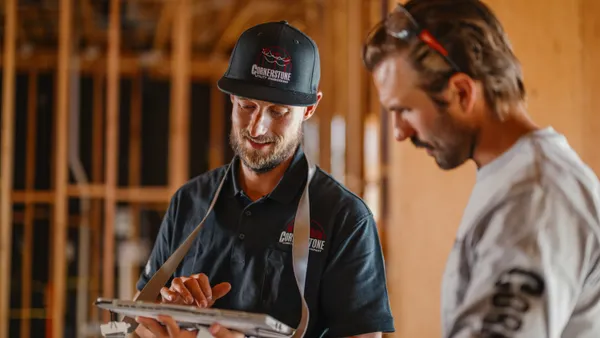Dive Brief:
- Mexican researcher José Carlos Rubio from the University of San Nicolas Hidalgo-Michoacan has created a cement additive that absorbs solar energy during the day and then emits light for up to 12 hours after dark, Science Daily reported.
- Potential applications of the cement include highways, bicycle lanes, buildings or anywhere else cement is currently used. Rubio said the material could last as long as 100 years, and the intensity of blue or green light can be adjusted depending on the user’s needs.
- Unlike plastic fluorescents, Rubio said his cement will not degrade as a result of sunlight exposure, and the only byproduct of the manufacturing process is water steam. The new technology is currently in the "transfer and commercialization stage," according to Science Daily.
Dive Insight:
The light-emitting cement — which would eliminate the need for electricity to light highways — is the latest innovation in concrete and cement products. Concrete is one of the most used building materials in the world, and it costs construction firms across the globe billions of dollars each year to repair.
Civil engineers at the University of Victoria in British Columbia announced last month that they were close to finalizing a formula for self-healing concrete. And last November, a research team from Cardiff University in Wales reported that they were testing three different concrete healing technologies to determine which worked best. The team said it was attempting to come up with an embedded system that could sense damage and assist with needed repairs.
Chris Tuan, at the University of Nebraska, created a "de-icing" concrete containing 20% steel shavings and carbon particles, which permits the concrete to conduct electricity when connected to a power source and generate heat. Tuan has been successfully testing the concrete on a 150-foot bridge near Lincoln, NE, since 2002. Another attention-getting concrete project is underway in Switzerland, where researchers have developed a heat-resistant concrete. By using a super absorbing polymer-polypropylene fiber additive for self-compacting concrete, the concrete mix can create small "pressure release" tunnels as it's setting up, thereby enabling the material to withstand extreme temperatures without extreme chipping or flaking.












